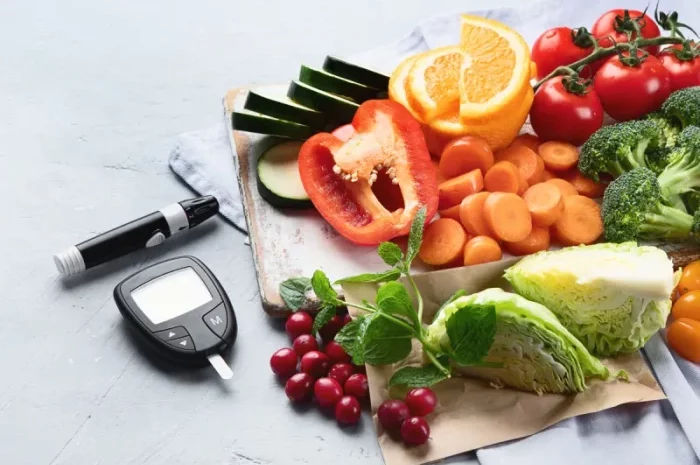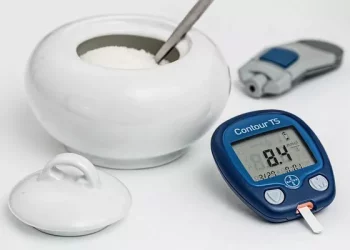Managing blood sugar levels is a key factor in preventing and controlling diabetes, improving metabolic health, and reducing the risk of complications such as heart disease and nerve damage. Diet plays a fundamental role in this process, as the foods we eat directly influence blood glucose levels. While there is no universal diet that works for everyone, certain dietary patterns and nutrient choices have been scientifically proven to lower blood sugar effectively.
This article explores the best diet strategies to maintain healthy glucose levels, key food choices, and practical meal-planning tips to optimize blood sugar control.
Understanding How Diet Affects Blood Sugar
Blood sugar, or blood glucose, is the primary source of energy for the body, derived mainly from carbohydrates. The pancreas releases insulin to help cells absorb glucose, maintaining balance. When this process is disrupted due to insulin resistance or insufficient insulin production, blood sugar levels rise, increasing the risk of type 2 diabetes.
A well-structured diet can:
-
Enhance insulin sensitivity
-
Prevent blood sugar spikes and crashes
-
Support weight management
-
Reduce inflammation, which contributes to insulin resistance
By selecting the right foods and avoiding those that cause rapid glucose fluctuations, individuals can take control of their metabolic health.
The Best Diet to Lower Blood Sugar: Key Principles
Several dietary approaches have been shown to help regulate blood sugar effectively. While individual needs may vary, the following principles form the foundation of a blood sugar-friendly diet:
1. Choose Low-Glycemic Index (GI) Foods
The glycemic index ranks carbohydrates based on how quickly they raise blood sugar. Low-GI foods cause a slow, steady rise, while high-GI foods lead to rapid spikes.
-
Low-GI foods (Best choices): Non-starchy vegetables, whole grains, nuts, seeds, legumes, and most fruits (berries, apples, pears).
-
Medium-GI foods (Consume in moderation): Whole wheat bread, brown rice, sweet potatoes, and oats.
-
High-GI foods (Limit or avoid): White bread, refined cereals, white rice, and sugary snacks.
2. Prioritize Fiber-Rich Foods
Fiber slows down digestion, helping to stabilize blood sugar and improve gut health. Soluble fiber, in particular, forms a gel-like substance that slows glucose absorption.
Best fiber sources:
-
Vegetables: Leafy greens, broccoli, cauliflower, carrots
-
Legumes: Lentils, chickpeas, black beans
-
Whole grains: Quinoa, barley, oats
-
Fruits: Berries, oranges, apples (with skin)
-
Seeds: Chia seeds, flaxseeds
3. Incorporate Healthy Proteins
Protein helps regulate blood sugar by slowing the absorption of carbohydrates and increasing satiety. Including protein in meals prevents post-meal sugar spikes.
Best protein sources:
-
Lean meats: Chicken, turkey, fish (salmon, sardines)
-
Plant-based proteins: Lentils, tofu, tempeh, quinoa
-
Dairy: Greek yogurt, cottage cheese
-
Eggs and nuts: Almonds, walnuts, sunflower seeds
4. Focus on Healthy Fats
Contrary to outdated beliefs, dietary fat does not directly raise blood sugar levels. Instead, healthy fats improve insulin sensitivity and provide sustained energy.
Best fat sources:
-
Monounsaturated fats: Olive oil, avocados, nuts
-
Omega-3 fatty acids: Fatty fish, chia seeds, flaxseeds
-
Nuts and seeds: Almonds, walnuts, pumpkin seeds
Avoid trans fats and excessive saturated fats, which contribute to inflammation and insulin resistance.
5. Limit Refined Carbohydrates and Added Sugars
Refined carbohydrates, such as white flour and processed foods, cause rapid spikes in blood sugar. Likewise, added sugars found in sweets, sodas, and processed snacks contribute to metabolic disorders.
Better alternatives:
-
Replace white bread with whole-grain or sprouted grain bread.
-
Use natural sweeteners like stevia or monk fruit instead of refined sugar.
-
Opt for homemade meals over processed, sugar-laden foods.
6. Stay Hydrated and Choose Smart Beverages
Dehydration can elevate blood sugar levels. Staying well-hydrated helps kidneys flush out excess glucose through urine.
Best drink choices:
-
Water (best option)
-
Herbal teas (chamomile, green tea)
-
Black coffee (without sugar or heavy cream)
-
Infused water with lemon, mint, or cucumber
Drinks to avoid:
-
Sugary sodas and fruit juices
-
Energy drinks and sweetened coffee beverages
-
Alcohol in excess
7. Control Portion Sizes and Practice Meal Timing
Overeating, even healthy foods, can lead to blood sugar imbalances. Practicing portion control and eating at regular intervals helps maintain stable glucose levels.
Practical tips:
-
Use smaller plates to avoid overeating.
-
Include protein, fiber, and healthy fats in every meal.
-
Avoid large meals before bedtime to prevent nocturnal glucose spikes.
8. Plan Balanced Meals with the Plate Method
A simple way to structure meals for better blood sugar control is the Diabetes Plate Method:
-
50% of the plate: Non-starchy vegetables (spinach, peppers, mushrooms)
-
25% of the plate: Protein (chicken, fish, tofu, beans)
-
25% of the plate: Complex carbohydrates (quinoa, brown rice, sweet potatoes)
This method ensures a balance of nutrients while preventing excessive carbohydrate intake.
Specific Diet Plans That Help Lower Blood Sugar
While the principles above apply broadly, certain structured diets are particularly effective for blood sugar management.
1. Mediterranean Diet
Rich in whole foods, healthy fats, and lean proteins, the Mediterranean diet improves insulin sensitivity and reduces inflammation.
Key features:
-
Emphasis on olive oil, nuts, and fatty fish
-
Whole grains and fiber-rich foods
-
Moderate red wine consumption (optional)
-
Limited processed foods and red meats
2. DASH Diet (Dietary Approaches to Stop Hypertension)
Originally designed for heart health, the DASH diet also helps regulate blood sugar due to its emphasis on whole foods and reduced sugar intake.
Key features:
-
High in fruits, vegetables, and whole grains
-
Low in sodium and processed foods
-
Lean proteins and healthy fats included
3. Low-Carb or Ketogenic Diet
Reducing carbohydrate intake significantly can help lower blood sugar levels, especially for people with insulin resistance.
Key features:
-
Focus on non-starchy vegetables, healthy fats, and proteins
-
Avoidance of refined carbs and sugar
-
Moderate protein intake to prevent gluconeogenesis (conversion of protein to glucose)
While the ketogenic diet can be effective, it should be followed under medical supervision to avoid potential risks, such as nutrient deficiencies.
4. Plant-Based Diet
A well-balanced vegetarian or vegan diet can enhance insulin sensitivity and support weight loss. However, it’s essential to focus on whole, unprocessed plant foods and avoid high-GI refined grains.
Best plant-based protein sources:
-
Legumes (lentils, chickpeas, black beans)
-
Tofu and tempeh
-
Nuts and seeds
-
Whole grains (quinoa, amaranth)
Conclusion
A diet designed to lower blood sugar focuses on whole, nutrient-dense foods that promote steady glucose absorption and enhance insulin function. By emphasizing fiber, healthy fats, lean proteins, and low-GI carbohydrates while avoiding processed sugars and refined grains, individuals can effectively manage blood sugar levels and improve long-term metabolic health.
While different diet plans—such as the Mediterranean, DASH, low-carb, and plant-based diets—can be effective, the best approach depends on individual preferences, lifestyle, and medical conditions. Consulting a healthcare professional or nutritionist can help tailor the right dietary strategy for optimal blood sugar control.
By making informed food choices and adopting a balanced eating pattern, individuals can take control of their blood sugar levels and reduce the risk of diabetes-related complications.
Related topics:
What Foods That Are Not Good for Diabetic Persons






















